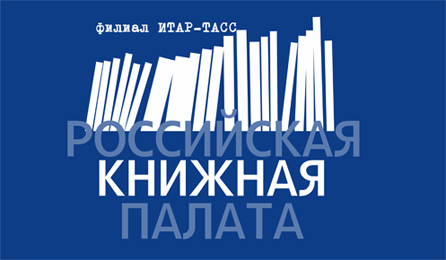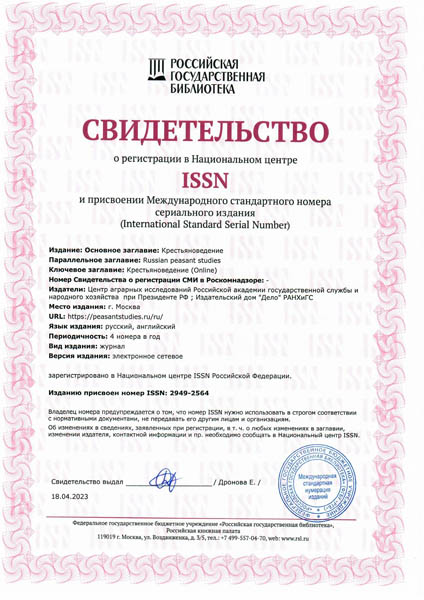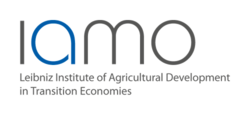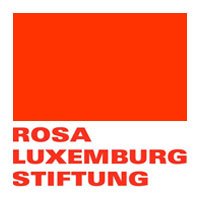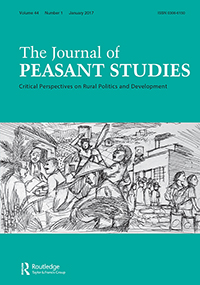Shagaida N. I. Is it possible to quickly eliminate labor shortage in Russian agriculture? // The Russian Peasant Studies. 2024. V.9. №2. P. 139-152.
DOI: 10.22394/2500-1809-2024-9-2-139-152
Annotation
In November 2023, the First Deputy Minister of Agriculture Oksana Lut estimated the shortage of workers in agriculture at 200,0001, obviously implying agricultural organizations. According to Lut, one of the reasons for such a shortage is low salaries: the limited effective demand for products does not allow agricultural organizations to increase the selling price of produce, which limits the wages of agricultural workers. However, the number of people employed in agriculture declines almost everywhere — this is a common situation in many countries. On the one hand, this decline is determined by an increase in labor productivity, i.e., a reduction in the number of workers is the desired result; on the other hand, many agricultural enterprises suffer from the lack of needed workers. Therefore, it is necessary to understand why there is a shortage of agricultural workers in Russia, focusing on the details of this situation. Based on the Federal State Statistics Service’s data, the author considers this situation, in particular the number of employed in agriculture, main reasons for such a labor shortage in agriculture and national economy in general, possibilities and limitations of the reliance/ dependence on labor migrants (especially from the post-Soviet countries) and on unemployed in the Russian labor market, regional differences in the available workforce, finally providing some recommendations to change the current situation.
Keywords
Labor shortage, agriculture, agricultural organizations, wages, unemployment, labor migrants, regional differences.
About the author
Shagaida Natalia I., DSc (Economics), Head of the Center for Agro-Food Policy, Russian Presidential Academy of National Economy and Public Administration. Vernadskogo Prosp, 82, Moscow, 119571.
E-mail: This email address is being protected from spambots. You need JavaScript enabled to view it.
The article was submitted on 22.02.2024.
Nefedova T. G. Tatarstan: rural-urban development under the spatial trends of 1990–2020 // The Russian Peasant Studies. 2023. V.8. №4. P. 102-120.
DOI: 10.22394/2500-1809-2023-8-4-102-120
Annotation
The article examines the main trends in the economic development of the Republic of Tatarstan from 1990 to 2020 and identifies some consequences of the 2022 sanctions for these trends. The author stresses the role of Tatarstan in the life of European Russia, showing the spatial structure of its settlements and economy. The article outlines the differences in the Tatarstan industrial production, trade and agriculture by district and presents the key trends in their changes over thirty years on maps and figures. The author identifies the features of rural areas under study based on the ethnic composition of their population, distance from cities and economic transformations in agriculture. The author pays special attention to agroholdings that play an important role in the social-economic development of Tatarstan and provides examples from the history of some agroholdings to prove their impact on the economic development of rural areas. However, the role of small business in the development of rural areas is also explained, and the issues of rural development in some areas are examined in detail. The author concludes with a list of main problems in the development of the Republic of Tatarstan.
Keywords
Republic of Tatarstan, settlement, agglomeration, ethnic composition of the population, industry, agriculture, agroholdings, small business.
About the author
Nefedova Tatyana G., DSc (Geography), Chief Researcher, Institute of Geography of the Russian Academy of Sciences. Staromonetny per., 29, Moscow, 119017.
E-mail: This email address is being protected from spambots. You need JavaScript enabled to view it.
Fedotova G.V., Novikov M.V., Dzhancharov T.M. Genesis of organic farming: World experience and Russia’s perspectives // The Russian Peasant Studies. 2023. V.8. №3. P. 113-128.
DOI: 10.22394/2500-1809-2023-8-3-113-128
Annotation
In the 21st century, the relevance of climate agendas made the transition to resource-saving and organic technologies for producing and processing agricultural products a strategic task for many countries. Therefore, we witness the emergence and expansion of organic forms of farming all over the world. Over the past ten years, ‘organic agro-industrial complex’ has become mainstream in the transition to ‘green economy’. The authors consider the main forms of organic farming and the basic principles and approaches to resource-saving production in the agro-industrial complex. The article presents a review of the regional distribution of organic farming focusing on its volume and resource potential. The authors develop a new concept for the transition to organic farming on the Russian example, emphasizing the country’s resource potential and competitive advantages. Based on this draft Strategy for the Development of Organic Production in the Russian Federation until 2030, the authors identify the market and the structure of organic production and its main drivers and propose new directions for the development of organic branch in the national agro-industrial complex.
Keywords
Agriculture, organic farming/production, market, food, manufacturers, ecology, products.
About the authors
Fedotova Gilyan V., DSc (Economics), Associate Professor, Moscow State Academy of Veterinary Medicine and Biotechnology named after of K. I. Scriabin. Akademika Scriabina St., 23, Moscow,109472.
E-mail: This email address is being protected from spambots. You need JavaScript enabled to view it.
Novikov Mikhail V., PhD (Technical Sciences), Associate Professor, Moscow State Academy of Veterinary Medicine and Biotechnology named after of K. I. Scriabin. Akademika Scriabina St., 23, Moscow, 109472.
E-mail: This email address is being protected from spambots. You need JavaScript enabled to view it.
Dzhancharov Turmushbek M., PhD (Biology), Associate Professor, Russian State Agrarian University — Moscow Timiryazev Agricultural Academy. Timiryazevskaya Str., 49, Moscow, 127434.
E-mail: This email address is being protected from spambots. You need JavaScript enabled to view it.
Merl S. “I consistently contribute to the assessment of the Soviet economic model” // The Russian Peasant Studies. 2023. V.8. №1. P. 131-163.
DOI: 10.22394/2500-1809-2023-8-1-131-163
Annotation
As a part of our traditional “Interviews” we present the selected fragments from the biographical memoirs of Stephan Merl, Professor of the Bielefeld University, a famous researcher of the agrarian economy and policy of the Soviet state. The memoirs were written as answers to the questions formulated by Stephan Merl together with his colleague and friend Alexander Nikulin. The questions set the direction for the biographical reflections as connected with the study of the Russian history and culture, in particular the fate of the Russian village, tragedy of collectivization, and turns of the Soviet agrarian policy. The memoirs reflect the dramatic episodes of the European history in the second half of the 20th century, some of which the author experienced, while others studied in the scientific perspective. Professor Merl’s diligence, deep knowledge of historical sources and research objectivity allowed him to suggest a new interpretation of the events that have become history quite recently or are becoming history now. We present an excerpt from his memoirs which will be published in full in the book series of the Russian Peasant Studies.
Keywords
Russia, Germany, USSR, agriculture, collectivization, agrarian policy, perestroika.
About the author
Merl Stephan, DSc (History), Professor, Bielefeld University, Universitätsstr., 25, 33615 Bielefeld, Germany.
E-mail: This email address is being protected from spambots. You need JavaScript enabled to view it.
Rural areas of Bashkiria: Prevailing types and features of transformation in the post-Soviet period
Feb 08 2023Alekseev A. I., Imangulov L. R. Rural areas of Bashkiria: Prevailing types and features of transformation in the post-Soviet period // The Russian Peasant Studies. 2022. V.7. №4. P. 109-132.
DOI: 10.22394/2500-1809-2022-7-4-109-132
Annotation
The article outlines the features of the development of rural areas in the Republic of Bashkortostan in the post-Soviet period, such as the high share of the rural population, developed agricultural sector, institutional support of the village, etc. Based on the statistical data and the results of the field research, the authors identify the dominant types of rural areas in the Republic of Bashkortostan by municipal districts with the predominantly rural population. The key features of the typology are as follows: natural conditions, district’s position in the system ‘center-periphery’, characteristics of population, level of the development of agriculture and public utilities. The results of the cluster analysis and data systematization allowed to identify the following social-economic types of rural areas in the region: suburban rural area, agrarian Bashkiria, and traditional Bashkir rural area. For each type and subtype of rural areas the authors conducted a detailed social-economic analysis and described the trajectories of the rural transformation in the post-Soviet period. Today, the role of the agricultural sector in the life of the rural population is decreasing. In the final section, the authors assess the role of agricultural production in the life of the rural population by types of rural areas. Thus, in agrarian Bashkiria, work on the land still remains the main labor practice (employment in agricultural organizations, personal subsidiary farms), but the life of the significant part of population is poorly connected with the agrarian sector.
Keywords
Rural area, rural settlement, agriculture, factors of rural transformation, typology of rural areas, Bashkortostan.
About the authors
Alekseev Alexander I., DSc (Geography), Professor, Department of Economic and Social Geography of Russia, Faculty of Geography, Lomonosov Moscow State University. 119991, Moscow, Leninskie Gory, 1.
E-mail: This email address is being protected from spambots. You need JavaScript enabled to view it.
Imangulov Linar R., Master’s student, Department of Economic and Social Geography of Russia, Lomonosov Moscow State University. 119991, Moscow, Leninskie Gory, 1.
E-mail: This email address is being protected from spambots. You need JavaScript enabled to view it.
Gaikin V. A. Korean “collective farms” in Manchukuo (1932-1945) . // The Russian Peasant Studies. 2022. V.7. №4. P. 33-46.
DOI: 10.22394/2500-1809-2022-7-4-33-46
Annotation
The article describes the “collective villages” of Korean immigrants in Manchuria. These agricultural enterprises supplied products to the Kwantung Army and Japan. In 1944, 24,000 families of ‘collective’ immigrants lived in Northeast China (10% of Korean immigrants in Manchukuo). They all depended on the Japanese colonial structures which supplied the peasants with essentials and agricultural equipment, taking most of the harvest. The villages of Japanese settlers were of military-strategic importance. They were created on the territories at the border of the USSR as a stronghold of the colonial power and to control Manchuria. Korean colonists did not inspire much confidence in the colonizers, the Korean “collective farms” were to provide food for the Japanese expansion. Japanese officials simulated a virtual transfer of land as a property to Korean tenants. The belief in obtaining land (leased to Koreans) after paying off all loans to the Japanese company motivated the peasants to work productively. In fact, the loans were an instrument of enslaving the peasants. Promises to give them land after the loans were paid off were a phantom ‘carrot’ looming ahead. Loans of the “collective villages” were often used to pay off previous loans. The “collective farmers” got bogged down in debt bondage. The spatial design of such a village was a closed rectangle convenient for observation and control, which ensured the social isolation of villagers. By the late 1930s, collective villagers began to realize that they were victims of the Japanese colonial scam, which led to numerous exits from the “collective farms” (flight of Koreans).
Keywords
Manchukuo, Korea, collective villages, agriculture, Korean settlers, Japanese colonial policy, anti-Japanese guerrillas.
About the author
Gaikin Viktor A., Senior Researcher, Institute of History, Archeology and Ethnography of the Peoples of the Far East (Far-Eastern Branch of Russian Academy of Sciences). Pushkinskaya St., 89, Vladivostok, 690001, Russia.
E-mail: This email address is being protected from spambots. You need JavaScript enabled to view it.
Serova E. V., Nikulin A. M. “Today, in the rural development, the main goal is to change the paradigm” // The Russian Peasant Studies. 2022. V.7. №3. P. 210-236.
DOI: 10.22394/2500-1809-2022-7-3-210-236
Annotation
In the interview, the famous economist E. V. Serova talks about the features of the life path of the agrarian scientist and describes the stages of her scientific career — studies at the Faculty of Economics of the Lomonosov Moscow State University, work at the Agrarian Institute headed by the Academician A. A. Nikonov and in the Ministry of Agriculture of the Russian Government in the early 1990s, and later in the Food and Agriculture Organization (FAO). The interview pays particular attention to the research directions at the Institute for Agrarian Studies and to the development of agrarian education at the Higher School of Economics. Based on the ideas of randomness and regularity in the choice of the scientific profession, on the meaning of controllability and spontaneity of social-economic processes in the course of agrarian reforms, Serova identifies the system features of the strategic transformations of agriculture and rural development in Russia and abroad, which are related not only to economy but also to policy and culture. At the same time, Serova emphasizes the importance of social institutions and historical-cultural patterns of the rural residents’ behavior, on which the efficiency of the state measures in market transformations largely depends. The final part of the interview focuses on the prospects for the development of agrarian science and education, in particular on the need for a new paradigm for the development of rural areas in Russia.
Keywords
Economics, agrarian science, agricultural policy, agrarian education, transitional economy, agriculture, rural development.
About the authors
Serova Evgeniya V., DSc (Economics), Head of the Institute for Agrarian Studies, National Research University Higher School of Economics; Pokrovsky Blvd., 11, Moscow, 109028, Russia.
E-mail: This email address is being protected from spambots. You need JavaScript enabled to view it.
Nikulin Alexander M., PhD (Economics), Heal of the Center for Agrarian Studies, Russian Presidential Academy of National Economy and Public Administration; Head of the Chayanov Research Center, Moscow School of Social and Economic Sciences; Vernadskogo Prosp., 82, Moscow, 119571, Russia.
E-mail: This email address is being protected from spambots. You need JavaScript enabled to view it.
Gusakov T. Yu. Agrarian alternative for Yamal: Agriculture and indigenous population // The Russian Peasant Studies. 2022. V.7. №3. P. 106-150.
DOI: 10.22394/2500-1809-2022-7-3-106-150
Annotation
The current social-economic situation in Russia poses new challenges for industries, agriculture, and services. One of these challenges is the search for alternative sources of food supply in regions and the strengthening of food security under the import substitution policy. In agriculture, the emphasis is placed on the development of both main branches and those previously considered additional. At the same time, there are attempts to diversify economies of the single-industry regions in order to ensure their ‘sustainable’ development. One of the regions representing all the above trends is the Yamalo-Nenets Autonomous Region. Federal and regional authorities strive to reduce its budget dependence on the oil and gas rent and to invest in the traditional sectors of polar agriculture such as reindeer breeding and fishery. The article is based on the results of the author’s field studies in the summer of 2021 and describes the social-economic situation in Yamal. The author pays particular attention to agriculture and indigenous peoples of Siberia, to the history and main trends in the development of the nomadic and semi-nomadic groups of Yamal — to identify promising directions and main barriers for the development of regional agriculture.
Keywords
Regional development, human geography, Siberian indigenous nations, migration, oil-producing regions, agriculture, reindeer breeding.
About the author
Gusakov Timur Yu., Researcher, Center for Agrarian Studies, Russian Presidential Academy of National Economy and Public Administration; Vernadskogo Prosp., 82, Moscow, 119571, Russia.
E-mail: This email address is being protected from spambots. You need JavaScript enabled to view it.
Andreenkov S. N. Virgin Project of 1954 in Kazakhstan and Siberia: Dynamics of grain production // The Russian Peasant Studies. 2022. V.7. №3. P. 89-105.
DOI: 10.22394/2500-1809-2022-7-3-89-105
Annotation
The article aims at identifying features of grain production in Siberia and Kazakhstan during the campaign for developing virgin and fallow lands (second half of the 1950s) and subsequent decades of the Soviet and post-Soviet era; such features determined the results and consequences of the Virgin Project in 1954. The author identifies objective and subjective factors affecting the adoption and realization of the virgin land program; considers general and particular practices of plowing new lands; describes the dynamics of sown areas for crops, grain productivity and gross production, its qualitative characteristics in Siberia and Kazakhstan. The author argues that the campaign for developing virgin and fallow lands was a means of N. S. Khrushchev’s struggle for power, which explains its excessively large scale and relatively long duration. The author shows that the virgin land campaign is more significant for the history of Kazakhstan than for the history of Siberia. Due to the new land development in Kazakhstan, the sown areas of crops, primarily wheat, significantly increased; the network of large agricultural enterprises expanded; the infrastructure of agricultural production started to develop. In 1991, these production capacities became the foundations of the contemporary economy of independent Kazakhstan. In Siberia, the sown area of crops has decreased since the mid-1960s, but the gross grain harvest has grown, which indicates opportunities for intensive farming, and such opportunities are gradually realized.
Keywords
Virgin Project, campaign for developing virgin and fallow lands, grain production, acreage, yield, grain farms, agriculture, Kazakhstan, Siberia.
About the author
Andreenkov Sergey N., PhD (History), Senior Researcher, Sector of Agrarian History, Institute of History, Siberian Branch of the Russian Academy of Sciences; Akademika Nikolaeva St., 8, Novosibirsk, 630090, Russia.
E-mail: This email address is being protected from spambots. You need JavaScript enabled to view it.
Sharapov S. V. Agriculture of the Novosibirsk Region under the state agrarian policy on the eve and during the Great Patriotic War // The Russian Peasant Studies. 2022. V.7. №1. P. 52-68.
DOI: 10.22394/2500-1809-2022-7-1-52-68
Annotation
The article considers the impact of the Soviet state agrarian policy on the agricultural production in the Novosibirsk Region. In 1930s, the government was not far-sighted: for short-term gains (growth of production volumes) the long-term prospects were sacrificed. The ever-growing state plans for sowing and harvesting prevented the development of the rational agricultural system in Siberia. By the early 1940s, in most collective farms of the Novosibirsk Region, elementary agrotechnical rules were broken: fallow lands were reduced, deadlines for agricultural work were not kept, rules for crop rotation and seed production were ignored. Therefore, the long-term clogging and depletion of soils, among other factors, determined extremely low grain yields during the Great Patriotic War. In the prewar period, the state agrarian policy led to the rapid depletion of the agricultural production in the Novosibirsk Region. By 1941, the region was in a critical situation of an acute shortage of seeds, food, and livestock feed. In 1942, the Soviet government continued its blind sowing policy and obviously underestimated the negative impact of such a policy on production under the reduction in labor and inputs. Planning errors led to a sharp reduction in gross grain harvests from 1942. Until the end of the war, the Soviet agriculture was negatively affected by the short-sighted state policies that significantly reduced possibilities for the productive use of the local agricultural potential.
Keywords
Agriculture, state agrarian policy, agricultural technology, Great Patriotic War, peasantry.
About the author
Sharapov Sergey V., PhD (History), Researcher, Institute of History, Siberian Branch of the Russian Academy of Sciences. 630090, Novosibirsk, Nikolaeva St., 8.
E-mail: This email address is being protected from spambots. You need JavaScript enabled to view it.


